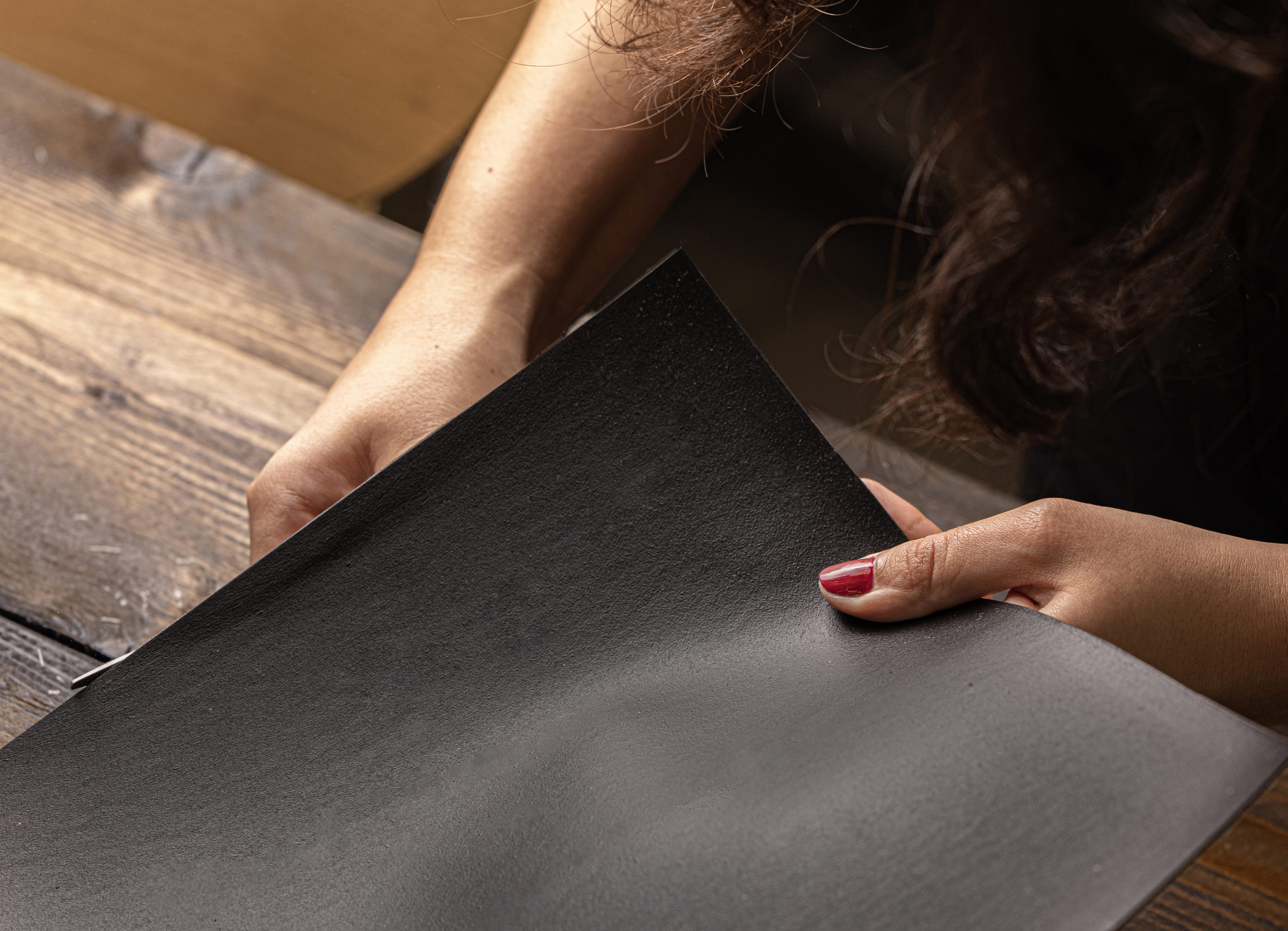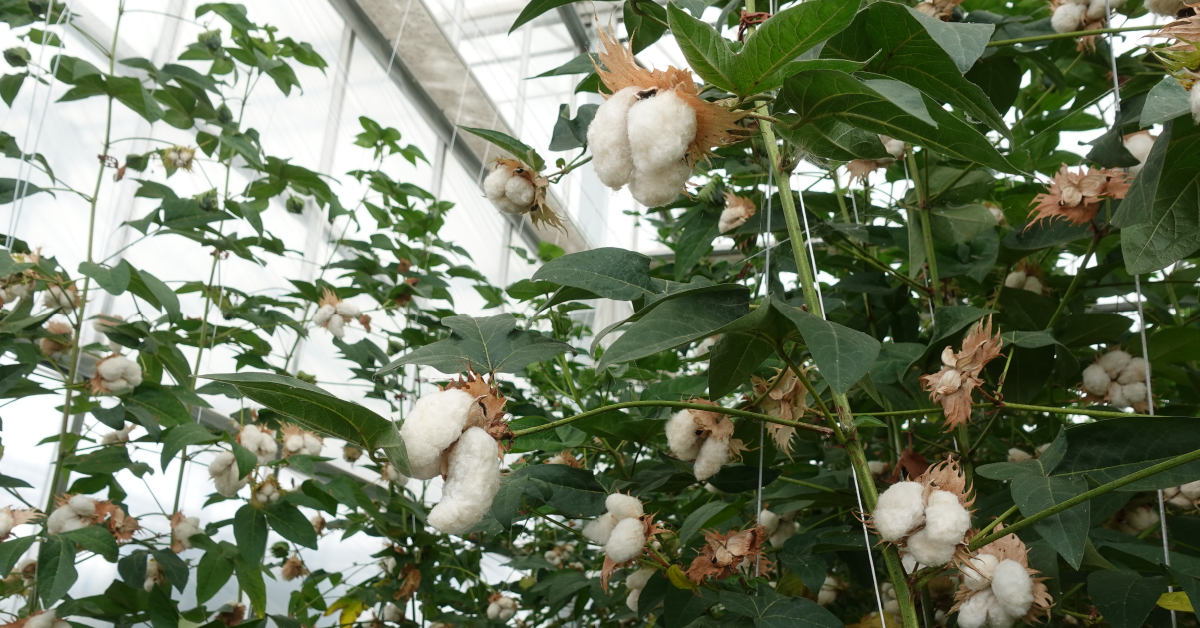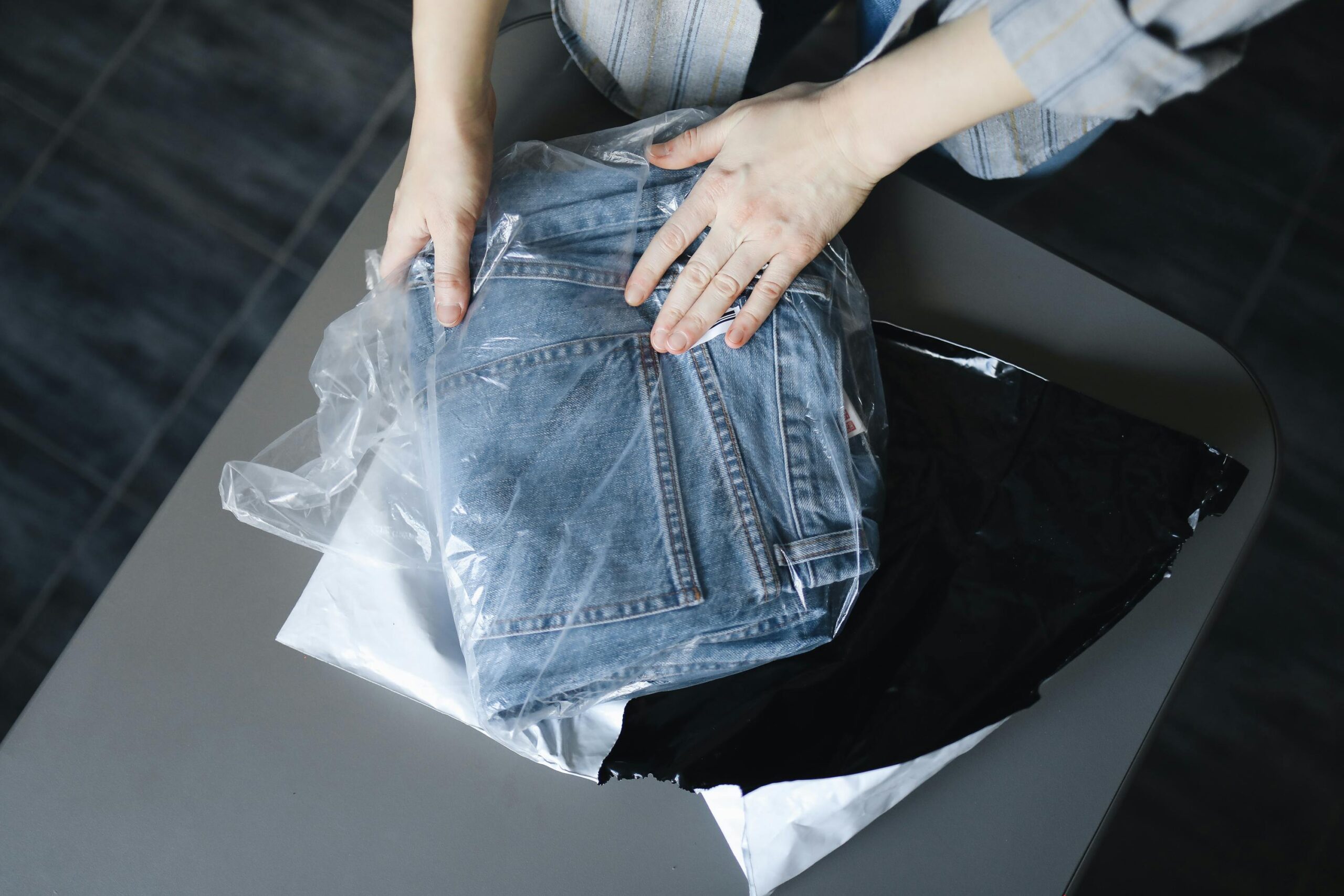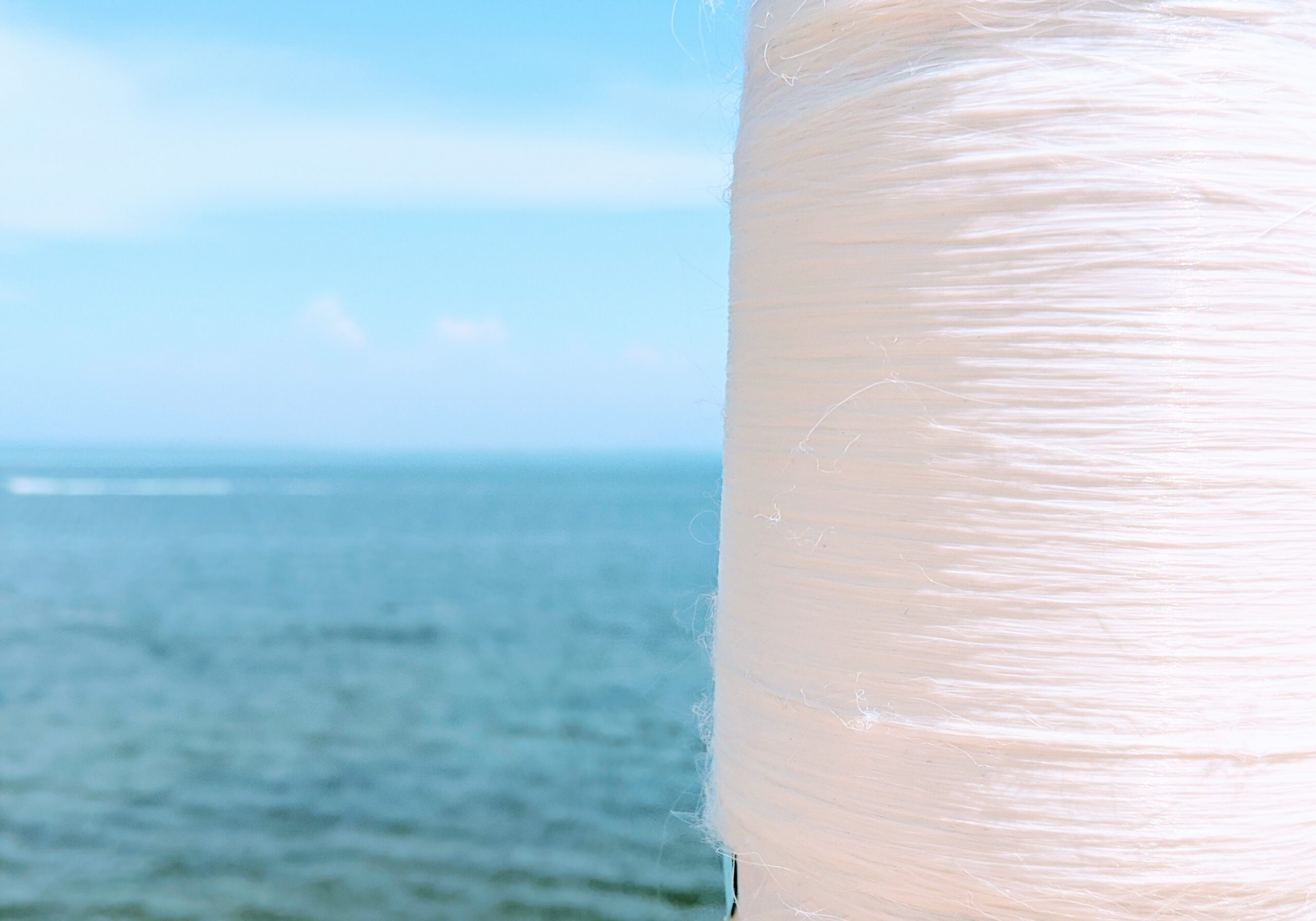Problem Statement
Next-gen materials offer a vital solution for future business growth and the achievement of the fashion industries goals.
Next-gen materials present significant opportunities during a time of mounting challenges, including climate change, textile waste accumulation, geopolitical turbulence, tightening regulations and commodity competition. However, as of today, next-gen materials – make up less than 1% of global fibre production.
The scaling of next-generation materials is hindered by financial, technical, and operational obstacles. Overcoming these challenges is key to achieving the transition the fashion industry needs towards next-gen materials – and that is what Fashion for Good is setting out to do.
.
How are we addressing this area?
Our report, Scaling Next-Gen Materials in Fashion: An Executive Guide, reveals that next-gen materials could represent 8% of the total fibre market by 2030, equivalent to approximately 13 million tonnes. (Note: This analysis doesn’t include leather alternatives)
Scaling next-gen materials requires both individual brand action and industry-wide collaboration across three primary levers: Demand, cost & capital. Fashion for Good’s initiatives support the industry across those levers in order to bend the adoption curve and reduce the cost of the transition.
These initiatives include:
-
Demand: Consistent demand signals stabilise markets; demand pooling and transition pricing can overcome adoption barriers. FFG’s Fiber Clubs orchestrate brands, innovators, and suppliers to pool demand and build efficiencies. Our Price Parity Toolkit enables novel commercial and pricing mechanisms to reduce the price premium barrier.
-
Cost: FFGs’s collaborative Validation Projects validate the performance and impact of these technologies and enable cost efficiencies and risk sharing.
-
Capital: Fashion for Good works with innovators to set up optimal financing and ownership models, by supporting the development of the right capital stack (e.g., via project financing) as well as matchmaking with the right scaling partners.
-
Next-Gen Fibre Definitions
(this is not an exhaustive list)
T2T (Textile-to-Textile) chemical recycling PET
Chemical recycling is a generic term that includes several recycling processes (solvent processing, depolymerisation, gasification). Depending on recycling processes, energy consumption, yield and output vary broadly; reaction outputs are syngas, monomers, polymers. The recycling process produces substances that can be used as raw material to manufacture new material. PET chemical recycling uses PET rich textile feedstock and one of the following processes: glycolysis, hydrolysis, methanolysis, or enzymatic depolymerisation to break polyester down to the monomer level. Depending on the technology, the outputs differ and require repolymerisation into PET.
T2T chemical recycling MMCF
The chemical recycling process produces substances that can be used as raw material to manufacture new material. Cellulosic chemical recycling uses cellulose rich (for example, cotton) textile waste feedstock through solvent processing to create a manmade cellulosic pulp/fibre.
Alternative processing MMCF
Alternatives to MMCF processing with hypothesised reduced impact (for example, fewer chemicals) when compared to conventional viscose or other MMCF processes. Examples include utilisation of ionic liquids as a solvent or mechanophysical techniques.
Alternative feedstock MMCF
Utilisation of alternative feedstocks (nontextile waste) to produce pulp for MMCF production. Examples include agri-residue and bacterial cellulose.
Cottonised bast fibres
Fibres derived from the outer cell layers of the stems of various plants, both cultivated for use in textiles and agri-residue fibres. These fibres undergo cottonisation processing to shorten bast fibre length and remove lignin and other components to allow for spinning on cotton machinery and improved handfeel and aesthetic properties. These cottonisation processes can be mechanical, chemical, enzymatic or other, or used in combination.
Biosynthetics
Biosynthetics refer to materials that are made from or produced, either wholly or partially, from renewable biological resources; this distinguishes them from traditional synthetics, which are typically derived from fossil fuels. Some common examples of biosynthetics are bio-based polyamides, bio-based PET, polylactic acid (PLA), and polyhydroxyalkanoates (PHAs).
Bio-based polyethylene terephthalate (PET)
Bio-based polyethylene terephthalate (PET) is a biosynthetic polyester made from renewable biological feedstocks, typically using bio-derived monoethylene glycol (bio-MEG) and terephthalic acid (TPA). Bio-based PET is chemically identical to conventional fossil-based PET, has a reduced carbon footprint, and compatible with existing PET recycling infrastructure.
Bio-based polyamide (PA)
Bio-based polyamide (PA) refers to a family of biosynthetic polymers derived partially or fully from renewable biological feedstocks (such as castor oil or bio-based sebacic acid). These polyamides are synthesised chemically through polymerisation reactions and have similar properties to conventional fossil-based nylons.
Polylactic acid (PLA)
Polylactic acid (PLA) is a biodegradable polyester made by the polymerisation of lactic acid, which is typically produced by the fermentation of plant-based sugars (e.g., corn, sugarcane).
Polyhydroxyalkanoates (PHA)
Polyhydroxyalkanoates (PHA) are a biodegradable and bio-based family of polyesters that are produced naturally by microorganisms through the fermentation of sugars, lipids, or other carbon sources.
Polybutylene succinate (PBS)
Polybutylene succinate (PBS) is a biodegradable biosynthetic polyester produced by the chemical polycondensation of succinic acid and 1,4-butanediol, which can be derived from renewable biological sources.
Polyethylene furanoate (PEF)
Polyethylene furanoate (PEF) is a biosynthetic polyester produced by the chemical polymerisation of bio-based monomers, usually 2,5-furandicarboxylic acid (FDCA) and monoethylene glycol (MEG). It is normally developed as a renewable alternative to PET.
"Leather" Alternatives and PU "Leather" Alternatives
“Leather” Alternatives and PU “Leather” Alternatives are innovative materials designed to replace and/or replicate traditional animal leather and fossil fuel–based synthetics with more sustainable options that do not require animal processing. These alternatives include materials made from plants, mycelium, microbial fermentation, and even cultivated animal cells grown in lab conditions.
Biofabricated proteins
Man-made fibres produced from protein polymers which are biofabricated by genetically modified microbes fed on nutrients (sugar feedstock). The polymer is extracted, purified, dried and then the protein polymer solution is spun into fibres. Regenerated proteins: Man-made fibres produced from either animal or vegetable nonfibrous proteins which have been reconfigured to take up a fibrous form. The process requires the isolation of the polymer from the source material for solubilisation so that it can be extruded or spun.
Integrated recycling
Relevant Resources
Explore tools, news, reports, and insights at the forefront of creating a positive future for the fashion industry.

Bending The Adoption Curve: Next-gen Materials To Reach 8% Of Fiber Market By 2030

Understanding 'Bio' Material Innovations: A Primer for the Fashion Industry Report

The Next Generation of Materials... From Waste

In Conversation with Renewcell: The Innovator Turning Worn-out Clothes into Next-gen Materials

5 FAQS About ‘Leather’ Alternatives
















